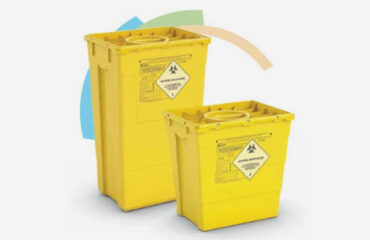Top Guidelines Of Reclaim Waste
Top Guidelines Of Reclaim Waste
Blog Article
Some Known Questions About Reclaim Waste.
Table of ContentsThe Only Guide to Reclaim WasteThings about Reclaim WasteReclaim Waste Fundamentals ExplainedRumored Buzz on Reclaim WasteHow Reclaim Waste can Save You Time, Stress, and Money.
Residential sewage waste refers to the waste and products from a residential septic container. The proper monitoring and disposal of residential sewage waste require liquid waste to be moved to a sewer therapy plant where the proper approaches and equipment are used to purify and dispose of waste.
Industrial waste frequently consists of prospective threats, such as flammable materials or a combination of fluid and strong waste products, and needs a more innovative and thorough disposal procedure. The disposal of commercial waste usually entails the filtration of waste before transport to ensure safe and correct disposal. Industrial waste is created from by-products and drainage of commercial procedures and production.
This kind of waste can not utilize the very same sewage administration transport or procedures as septic or industrial fluids. The hazardous waste monitoring process requires the assessment and screening of fluid waste prior to it goes through the disposal process (liquid waste removal). Overflow waste is the liquid waste that comes from drainage and excess stormwater in extremely populated locations or cities
Runoff waste can create contamination and flooding if not handled correctly. Ensuring proper waste administration can protect against disasters and reduce environmental damage.
Some Known Facts About Reclaim Waste.
Call PROS Providers today to learn regarding our waste management and disposal solutions and the proper methods to look after the fluid waste you produce.
(https://ameblo.jp/reclaimwaste1/entry-12874802223.html)This so-called 'wastewater' is not only a crucial resource however, after treatment, will certainly be launched to our land, rivers or the ocean. Made use of water from bathrooms, showers, baths, cooking area sinks, laundries and industrial processes is understood as wastewater.

water made use of to cool equipment or tidy plant and reference equipment). Stormwater, a kind of wastewater, is runoff that streams from agricultural and metropolitan locations such as roofings, parks, gardens, roads, paths and seamless gutters into stormwater drains, after rain. Stormwater moves without treatment directly to regional creeks or rivers, eventually reaching the ocean.
Reclaim Waste Can Be Fun For Everyone
In Queensland, most wastewater is treated at sewer treatment plants. Wastewater is transferred from domestic or industrial sites through a system of drains and pump stations, understood as sewerage reticulation, to a sewage therapy plant. City governments construct, keep and run most sewer therapy plants. Operators are certified under the Environmental Defense Act 1994 to release treated wastewater at an acceptable environmental standard right into rivers.
The Department of Natural Resources advises city governments concerning managing, operating and preserving sewage systems and therapy plants. In unsewered areas, city governments might require homeowners to set up individual or house sewage treatment systems to deal with residential wastewater from bathrooms, kitchen areas, shower rooms and washings. The Department of Natural Resources authorizes the usage of family systems when they are verified to be effective.
Most stormwater receives no treatment. In some brand-new class, therapy of some stormwater to eliminate litter, sand and gravel has actually started utilizing gross toxin catches. Wastewater treatment takes place in 4 stages: Gets rid of solid matter. Bigger solids, such as plastics and various other items mistakenly released to sewage systems, are gotten rid of when wastewater is gone through screens.
Wastewater then streams right into large storage tanks where solids work out and are eliminated as sludge. Grease and residue are skimmed from the surface. Uses small living organisms called micro-organisms to damage down and remove continuing to be liquified wastes and great fragments. Micro-organisms and wastes are included in the sludge. Removes nitrogen and phosphorus nutrients that could create algal flowers in our waterways and intimidate water life.
The Basic Principles Of Reclaim Waste
Nutrient removal is not offered at all sewage treatment plants since it needs costly specialist devices. Clear liquid effluent generated after treatment might still include disease-causing micro-organisms - industrial wastewater treatment.

Most wastewater flows into the sewage system. Under the Act, local federal governments carry out approvals and permits for eco relevant tasks (Periods) involving wastewater launches that might have a regional impact.
Facts About Reclaim Waste Revealed
Tracking supplies accurate details concerning water quality and can validate that licence conditions are being met. The info gotten with surveillance supplies the basis for making water high quality choices.
Report this page